‘On the Origin of Species’: an artist’s approach | Kostanjevica na Krki, Slovenia
Reflecting upon Charles Darwin's groundbreaking book “On the Origin of Species”, EAS artist Kristina Rutar, from Slovenia, created a site-specific solo exhibition at Gallery Božidar Jakac, in Kostanjevica na Krki. The research she did on the theory of evolution inspired her to experiment with different forms, to think about space and how to translate the different stages of development into the four fixed spaces of the gallery.
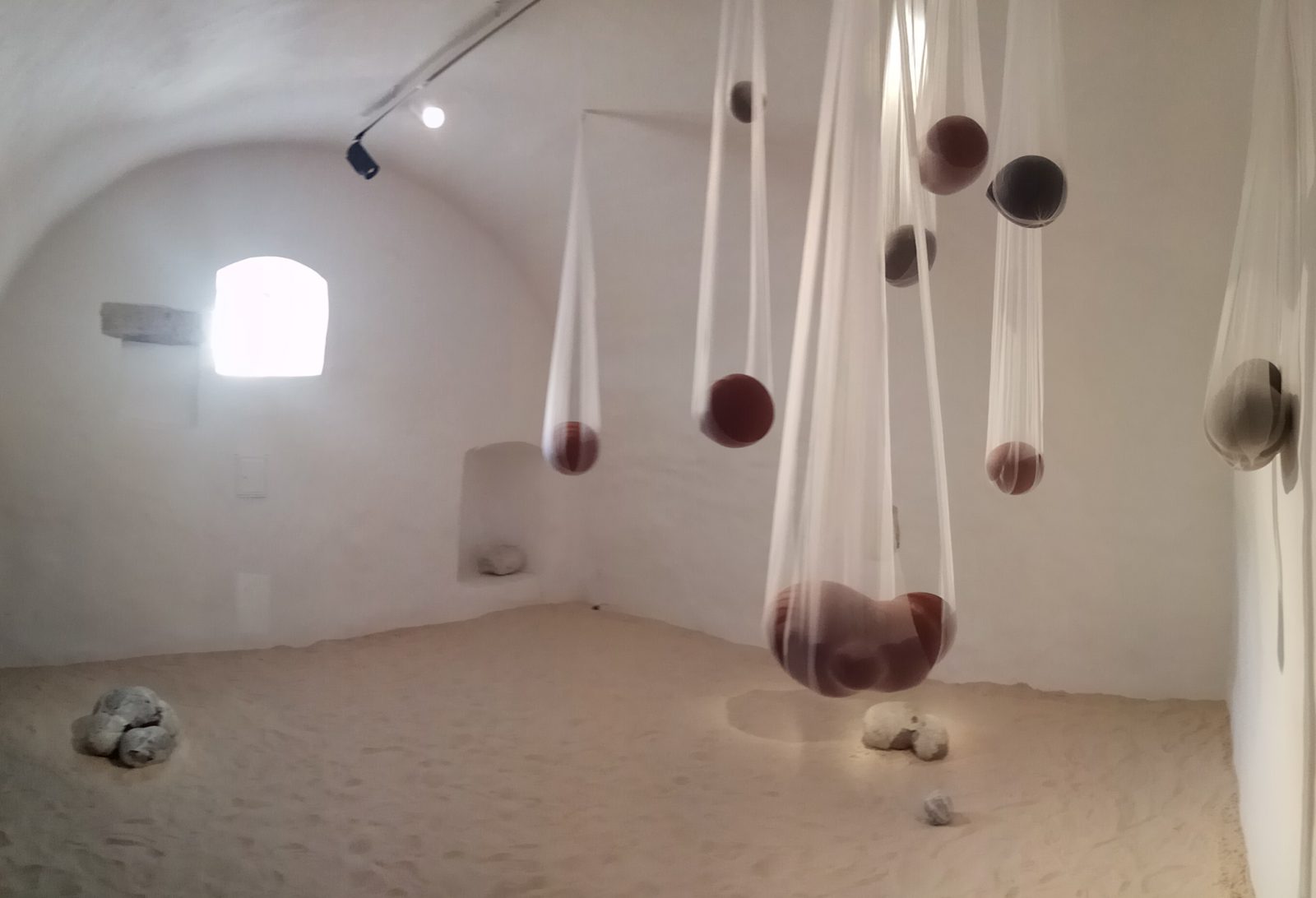
My first inspiration for this exhibition came when listening to the album Tomorrow in a Year, a collaboration between The Knife, Mt. Sims, and Planningtorock for an opera by the theatre company Hotel Pro Forma. The theme of the album is based on Charles Darwin's life and his book on the origin of species. Listening to the album made me wonder how I could grasp the vastness of the evolution and its impact on life on earth. It seemed like a fantastic challenge and I decided to dig into the theory, into Darwin's work and also into the work of contemporary scientists, like Richard Dawkins. As it turns out, evolution is not self-evident to quite many people, especially to believers in the creationist theory; the attitude toward science startled me.

The narrative of the exhibition was built around the space where I was invited to exhibit by the gallery Božidar Jakac: a beautiful 4 spaced lapidarium, in an old monastery, next to a church which frequently hosts big, contemporary art projects as well as exhibitions by Slovenia's most famous visual artists. The place has its own history and atmosphere, and I had to be careful to respect it and be mindful of its characteristics, but at the same time I had to build a new space that the viewers could be a part of. It was definitely both a challenge and support for materializing the concept I was working with to consider the given space.

The Installations
Room I: The Embrio Room.
Here I tried to represent the first forms of life, the cells and their growth. My goal was to understand and represent the smallest forms of life, and how they developed according to the principle of cells dividing.
Sand had a big role in the exhibition. Coming from outside, from a stone floor into the room, the softness of the sand would change the viewers’ steps and the perception of the space around them. The dim light and the sound of a heartbeat in the background, created the experience of being in a womb-like space.
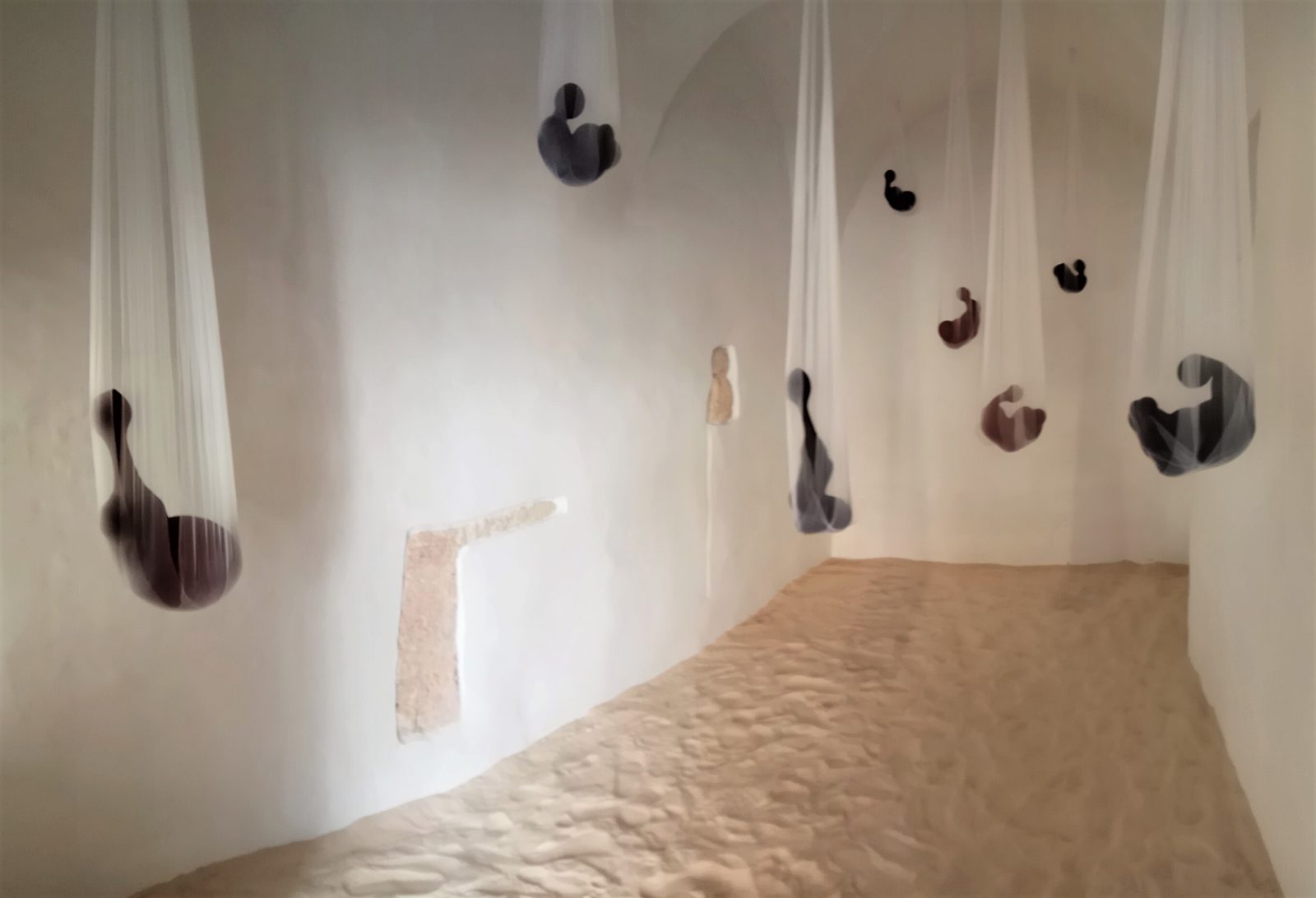
Room II: The Developed Embryos.
The developed embryos were fewer than the cells in in the first room, because in the process of natural evolution, only the strongest survive. The sound was also upgraded - next to the heartbeat, there was also the sound of breathing - evidence of the the embryos’ growth.
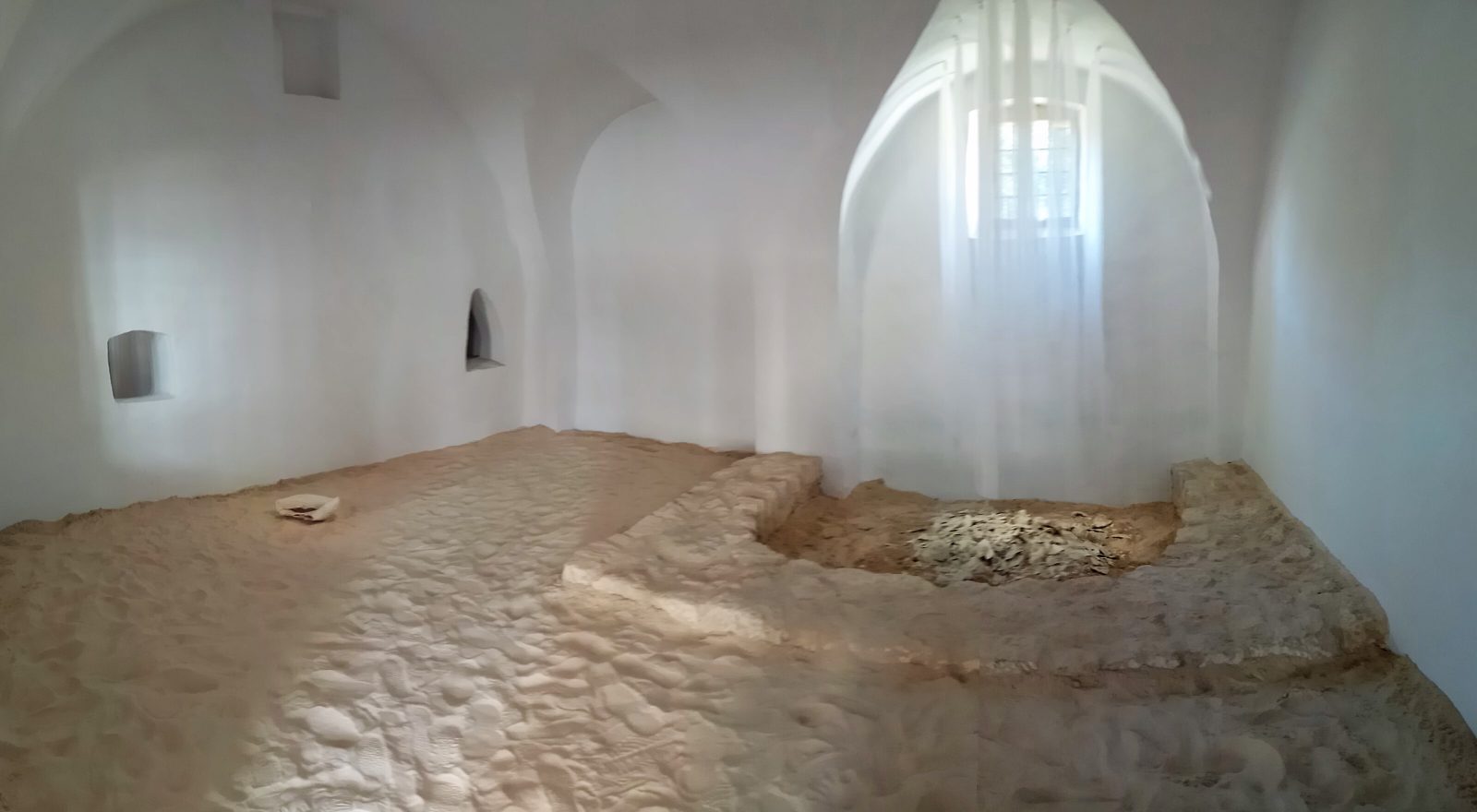
Room III: An Empty Nest.
The embryos left the safety of the womb. The room was empty. All that was left were the shards of their shells and threads of their cocoons. There was silence, only the weak sound of a heartbeat from the previous two rooms could be heard, as a reminder that there was no longer life in this space.
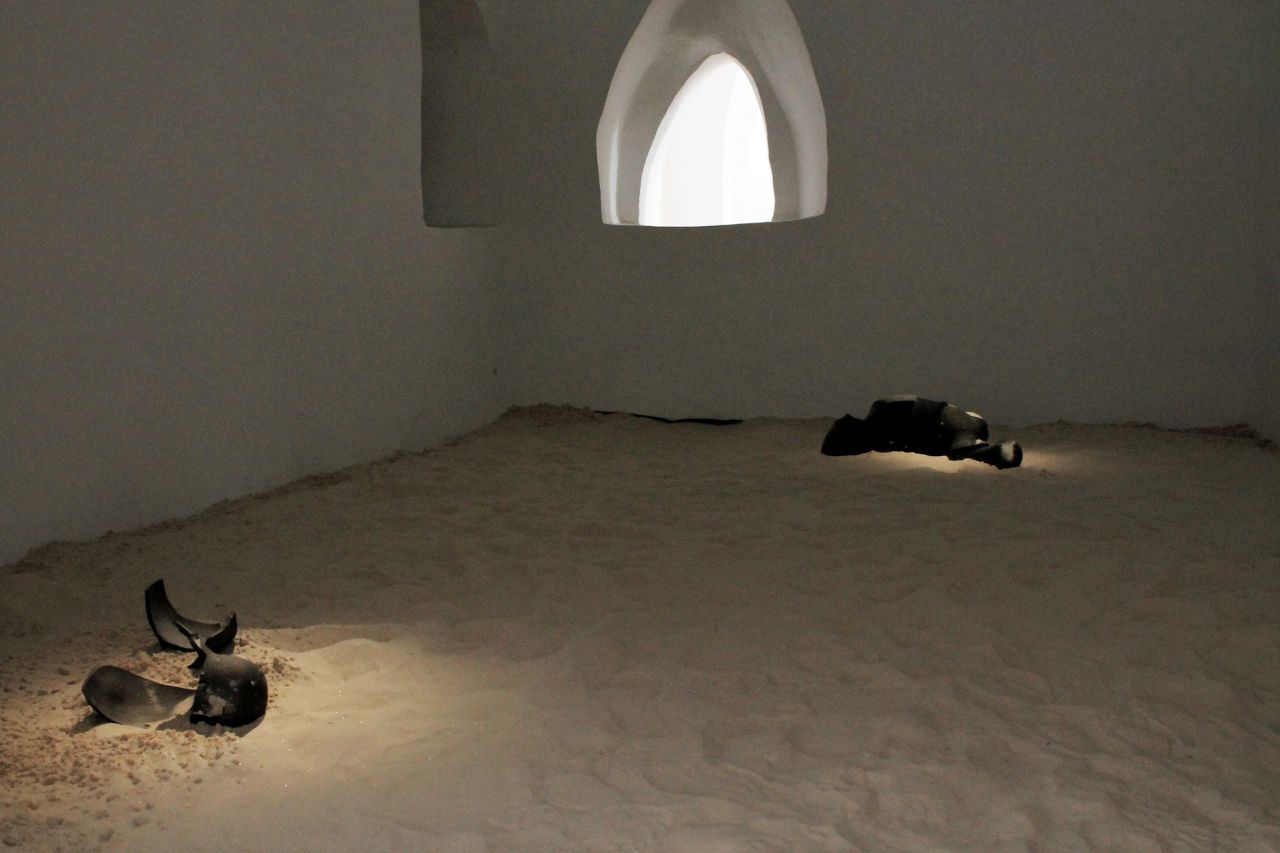
Room IV: The Final Room.
While the first three phases showed the development of the embryo form and the story of life, the last room was a contrast to them - a reminder not only of death but also of our role in it, the role of us humans when it comes to shaping the future of our planet. This was intended not only on the physical level, of taking care of nature and preserving the species, but also on a sociological level - the relationships we build in our society between ourselves and the others, between the different groups and the minorities.
It is well known that Darwin's theory was and still is taken out of context to justify racism. It is taken out of context to theorize the superiority of certain “races” over others, to refuse help to the people in need, the weaker ones. Life has become the race of the strongest, and the fittest, without any regard to others.
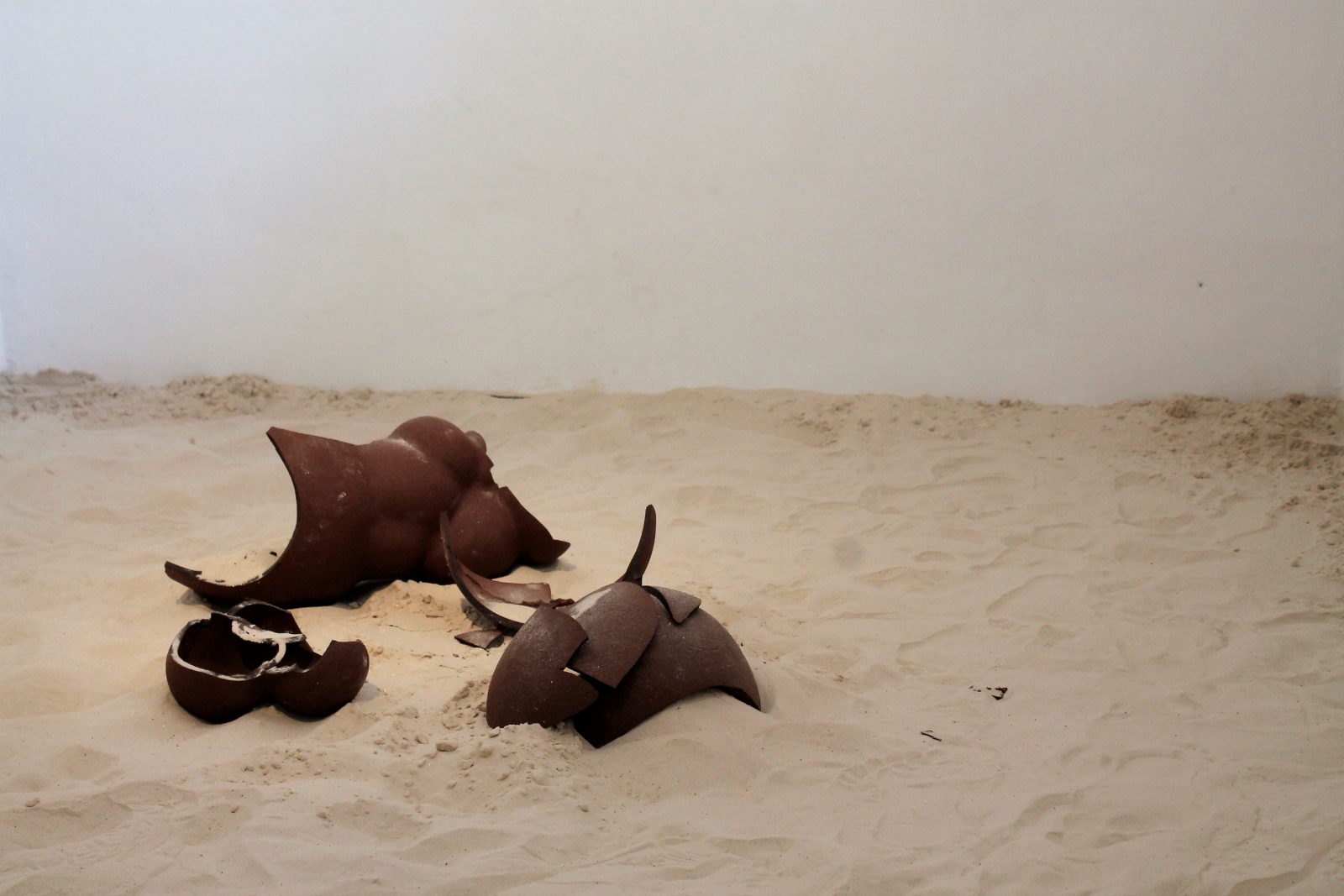
With the intent of pointing out this problem, the visual language of the work in Room IV was shifted from growing sculptures to decaying ones. The sand got a new dimension: here not only did it give softness to the space, but it recalled every step made in the space. The imprints of everyone’s feet, which were left on the sand starting in the first room and all through the exhibition, indicated the imprints we leave on the earth, the role we have in the world - we are responsible and each one of us has an impact on the future of our world. The forms in Room IV were broken, shattered, and decomposing into the nothingness of the sand we carelessly walked on.
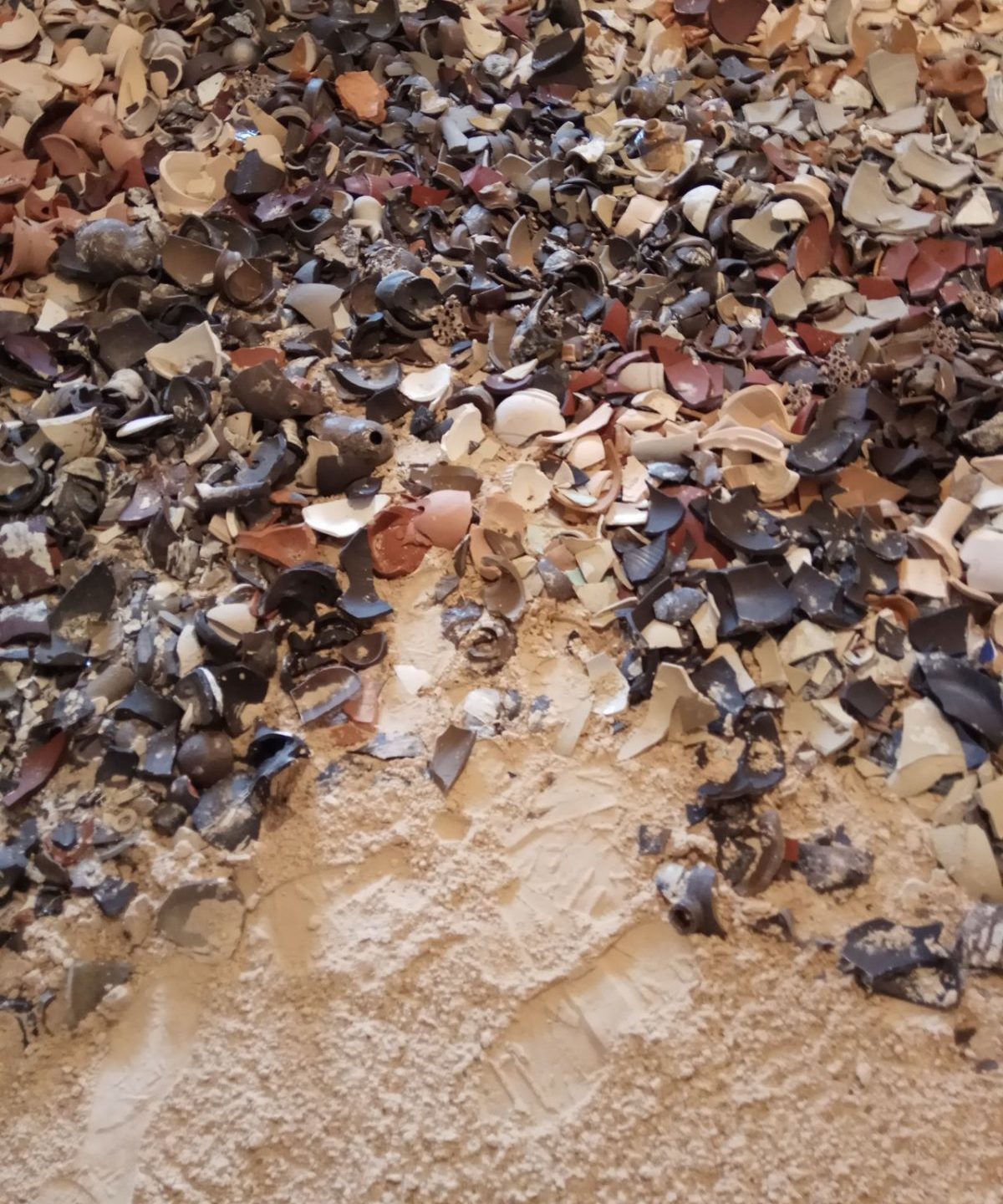
----------------------------------------------------------------------------------------------------------------------------------------------------------------
The viewers' reactions to each room were quite varied, but at the same time related. I was amazed to see how the children followed the narrative and how the message was clear to them, and I was also surprised by some strong emotional reactions. I was told about the experience of a woman who did not want to enter the last room, the room with shreds. When she glimpsed at it through the door she had a panic attack. They finally convinced her to enter, reassuring her there was nothing brutal in the room, just shreds. I have to say that I was happy hearing the story, feeling that the exhibition had achieved its goal - making people feel and think.
----------------------------------------------------------------------------------------------------------------------------------------------------------------
Reflections
With the ‘The Origin of Species’ project I challenged myself, pushing to test how creative and what kind of a problem-solver I could be. How could the development and decay of a form be expressed? Right now it seems so clear to me, but looking back, being intentionally limited to the medium of ceramics, working on a potter's wheel and researching its potential, was a fantastic challenge and I am looking forward to the next one.
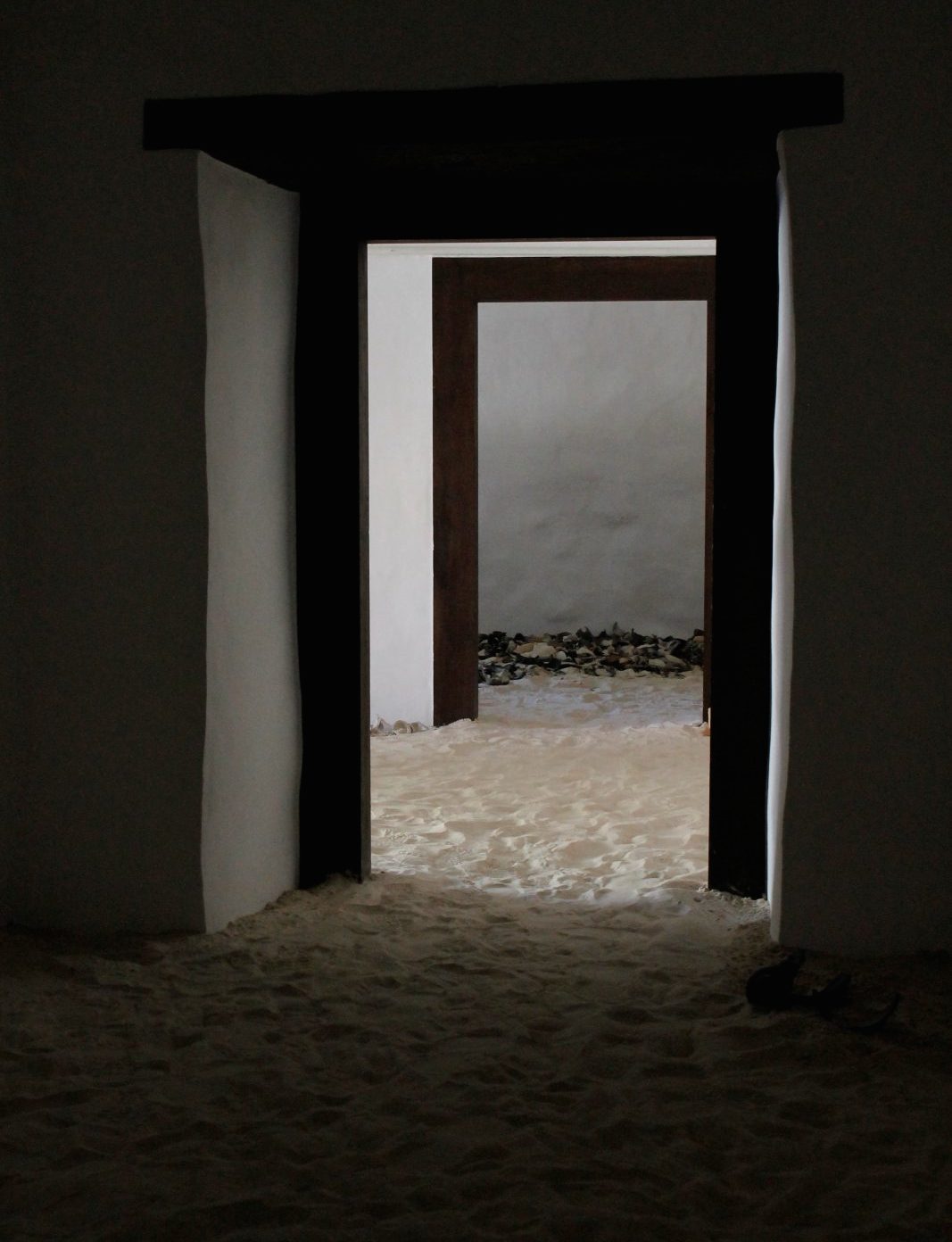
This project had a huge impact on my work, especially exploring different ceramic forms and approaches of hanging them. Through testing, building, and re-shaping I created a kind of archive of forms, which I am keeping for future projects. It was a great experience working for a specific location, with a specific theme and the intention of getting a clear message across.
I would love to expand this work, but I would have to find a new space for it, and the new space would, with its characteristics, build a new narration which would express the same message but in a new way. I would love to continue with this project and I am still searching for a place to do it.